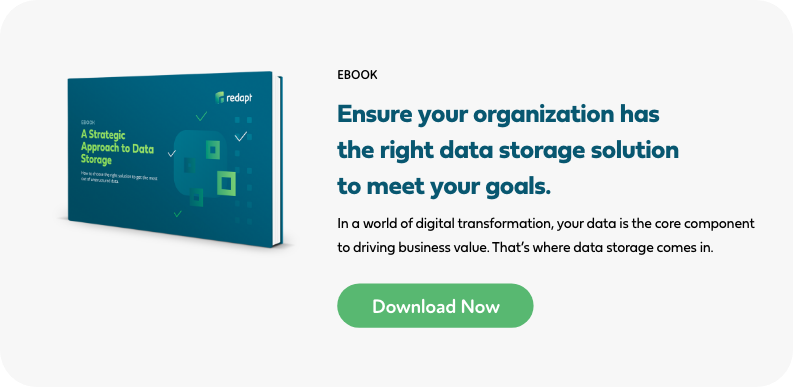For many organizations, a critical step in achieving the agility necessary to remain competitive is adopting a hybrid cloud strategy.
Unlike fully embracing the public cloud—which can lock you into the whims and models of providers—or relying solely on a solution that is on-premises—which can easily become expensive to build and maintain—the hybrid cloud offers more freedom to work and invest as you see fit.
Here are more benefits of a hybrid cloud strategy:
 1. Governance and security control
1. Governance and security control
Many organizations work in industries that require strict control of governance and security, whether it’s access to data or work on sensitive products (e.g., government, healthcare, financial services, etc.). A hybrid cloud approach allows for stricter control of data on-premises, with the ability to leverage the cloud as needed for specific workloads at scale.
 2. Financial flexibility
2. Financial flexibility
Taking a hybrid cloud approach allows organizations to assign investment as CapEx or OpEx. This provides greater flexibility in how investments and expenditures are made and makes it easier to scale internally as needs arise.
 3. More tools
3. More tools
Cloud providers are routinely offering new tools to entice customers and help organizations improve their productivity. Amazon, for example, has recreated a recon technology that makes it possible to rapidly identify objects in photos—a technology most organizations are unable to afford and implement on their own.
Tools like these, which are intended for high-intensity workloads, open up new possibilities for analytics and deeper insights that can be used to deliver new products and services.
 4. Scalability
4. Scalability
Datacenters can only do so much before they become an economic liability. During times of peak growth, the hybrid cloud allows organizations to scale and provision on-demand in order to meet their needs without a major overhaul of their development process.
 5. Hardware familiarity
5. Hardware familiarity
Most organizations have heavily invested in hardware and are timid about scrapping that investment for a full-on move to the public cloud. A hybrid cloud strategy provides the best of both worlds: the hardware an organization already has coupled with the scale of the cloud.

How to develop a hybrid cloud strategy
If your organization is looking to transition to the hybrid cloud, the most effective way to get started is to develop a roadmap.
The first step of this process is to understand the data you have access to, along with the types of work that need to be done on that data.
Understanding what you have and what you want to do will then help you chart out where different types of data should be stored. Sensitive data, for instance, will likely need to remain on-premises, whereas anonymized and most unstructured data will benefit from being housed in the cloud.
Lastly, take a thorough inventory of the applications your teams rely upon on a daily basis, then investigate which applications would be more effective when modernized for the cloud.
While not every application will make the list, those that can make the move off-premises can provide greater flexibility and accelerated workloads for your developers.
Unlock key insights, reach more customers, and streamline your operations to reduce costs by having the right data storage solution in place. Learn more in our eBook A Guide to Managing and Scaling Your Unstructured Data in a Hybrid Cloud. Get your free copy now.
Categories
- Cloud Migration and Adoption
- Enterprise IT and Infrastructure
- Artificial Intelligence and Machine Learning
- Data Management and Analytics
- DevOps and Automation
- Cybersecurity and Compliance
- Application Modernization and Optimization
- Featured
- Managed Services & Cloud Cost Optimization
- News
- Workplace Modernization
- Tech We Like
- AWS
- Social Good News
- Cost Optimization
- Hybrid Cloud Strategy
- NVIDIA
- Application Development
- GPU




